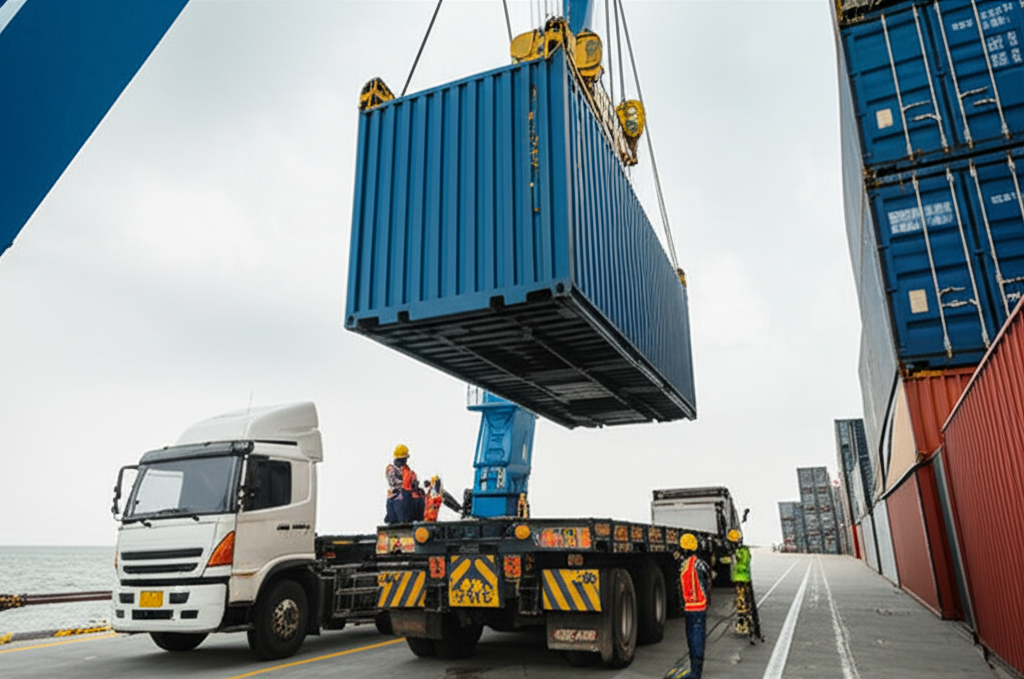FCL vs LCL Rail Freight: Choosing the Right Option for China-North America Shipping

Table of Contents
Quick Navigation
Introduction to Rail Freight Between China and North America
Rail freight has emerged as a viable alternative to ocean and air shipping for goods moving between China and North America. With the development of the China-Europe Railway Express and connections to North American rail networks, businesses now have more options for transporting their goods across continents.
When considering rail freight, one of the most important decisions is choosing between Full Container Load (FCL) and Less than Container Load (LCL) shipping. This choice can significantly impact your shipping costs, transit times, and overall logistics strategy.
FCL Rail Freight
Full Container Load: Your goods are the only items in the container.
LCL Rail Freight
Less than Container Load: Your goods share container space with other shipments.
Understanding FCL Rail Freight
Full Container Load (FCL) rail freight involves shipping goods in a dedicated container that is exclusively used for your cargo. This option is ideal for larger shipments that can fill an entire container.

FCL containers being loaded onto a freight train
Advantages of FCL Rail Freight:
- Enhanced Security:
Your goods are the only items in the container, reducing the risk of damage or contamination from other shipments.
- Faster Transit:
FCL shipments typically experience fewer delays as they don't require consolidation or deconsolidation.
- Cost-Effective for Large Volumes:
For shipments that can fill at least 75% of a container, FCL is often more economical on a per-unit basis.
- Simplified Tracking:
Monitoring a single container is more straightforward than tracking individual pallets within a shared container.
Disadvantages of FCL Rail Freight:
- Higher Minimum Cost:
The minimum cost for FCL is higher, making it less suitable for smaller shipments.
- Potential for Unused Space:
If your goods don't fill the container, you're essentially paying for unused space.
Understanding LCL Rail Freight
Less than Container Load (LCL) rail freight involves sharing container space with other shippers. Your goods are consolidated with other shipments heading to the same destination, making it a more economical option for smaller cargo volumes.

LCL cargo being consolidated in a warehouse before loading
Advantages of LCL Rail Freight:
- Lower Minimum Costs:
You only pay for the space your goods occupy, making it more affordable for smaller shipments.
- Flexibility:
LCL allows for more frequent shipping without waiting to accumulate enough goods to fill a container.
- Ideal for Testing New Markets:
When entering new markets, LCL allows you to ship smaller quantities to test demand.
Disadvantages of LCL Rail Freight:
- Longer Transit Times:
LCL shipments require additional handling for consolidation and deconsolidation, adding to transit time.
- Higher Risk of Damage:
More handling increases the risk of damage to your goods.
- Higher Cost per Unit:
While the minimum cost is lower, the cost per unit volume is typically higher than FCL.
- More Complex Documentation:
Sharing container space means more complex paperwork and potential for delays.
Comparing Costs: FCL vs LCL Rail Freight
When comparing costs between FCL and LCL rail freight, several factors come into play:
| Factor | FCL | LCL |
|---|---|---|
| Base Rate | Higher minimum cost | Lower minimum cost |
| Cost per CBM | Lower for large volumes | Higher |
| Handling Fees | Lower (less handling) | Higher (more handling) |
| Insurance | Potentially lower rates | Potentially higher rates |
Rule of Thumb: If your shipment exceeds 15 cubic meters (CBM) or weighs more than 10 tons, FCL rail freight is likely more economical. For smaller shipments, LCL typically offers better value.
Transit Times: FCL vs LCL Rail Freight
Transit times for rail freight between China and North America vary based on several factors, including origin and destination points, border crossings, and whether you're shipping FCL or LCL.
FCL Rail Freight
From major Chinese cities to major North American destinations
LCL Rail Freight
Adds 3-7 days to FCL transit times due to additional handling
Making the Right Choice for Your Business
When deciding between FCL and LCL rail freight for your China-North America shipping needs, consider these key factors:
Choose FCL Rail Freight If:
- Your shipment volume exceeds 15 CBM or 10 tons
- You're shipping high-value goods that require enhanced security
- Minimizing transit time is a priority
- You have regular, large-volume shipments
Choose LCL Rail Freight If:
- Your shipment volume is less than 15 CBM or 10 tons
- You're shipping less frequently or testing new markets
- Budget constraints are a primary concern
- You need flexibility in shipping schedules
Conclusion
Both FCL and LCL rail freight options offer viable alternatives to traditional ocean and air shipping between China and North America. The right choice depends on your specific business needs, shipment volume, budget constraints, and time sensitivity.
Expert Logistics Solutions from Sino Prime Shipping
At Sino Prime Shipping, we offer comprehensive FCL and LCL rail freight solutions tailored to your unique requirements. Our logistics experts can help you analyze your shipping needs and recommend the most cost-effective and efficient option for your China-North America logistics.
Stay Updated on Logistics Trends
Subscribe to our newsletter for the latest insights on China-North America shipping